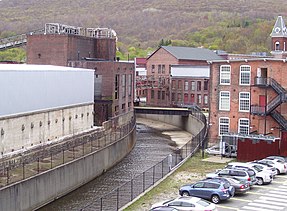
North Adams is a city in Berkshire County, Massachusetts, United States. It is part of the Pittsfield, Massachusetts Metropolitan Statistical Area. Its population was 12,961 as of the 2020 census. Best known as the home of the largest contemporary art museum in the United States, the Massachusetts Museum of Contemporary Art, North Adams has in recent years become a center for tourism, culture and recreation.

The Sidney and Lois Eskenazi Museum of Art at Indiana University is an art museum at Indiana University Bloomington, which opened in 1941 as the Indiana University Museum of Art under the direction of Henry Radford Hope. The museum was intended to be the center of a “cultural crossroads,” an idea brought forth by then-Indiana University President Herman B Wells. The present museum building was designed by I.M. Pei and Partners and dedicated in 1982. The museum's collection comprises approximately 45,000 objects, with about 1,400 on display. The collection includes items ranging from ancient jewelry to paintings by Pablo Picasso and Jackson Pollock. In May 2016, after the announcement of the largest cash gift in the museum's history, the museum was renamed the Sidney and Lois Eskenazi Museum of Art in honor of Indianapolis-based philanthropists Sidney and Lois Eskenazi. The museum is located on the Indiana University Bloomington campus at 1133 E. Seventh Street.

The Art Gallery of Ontario is an art museum in Toronto, Ontario, Canada, located in the Grange Park neighbourhood of downtown Toronto, on Dundas Street West. The building complex takes up 45,000 square metres (480,000 sq ft) of physical space, making it one of the largest art museums in North America and the second-largest art museum in Toronto, after the Royal Ontario Museum. In addition to exhibition spaces, the museum also houses an artist-in-residence office and studio, dining facilities, event spaces, gift shop, library and archives, theatre and lecture hall, research centre, and a workshop.

Robert Walter Irwin was an American installation artist who explored perception and the conditional in art, often through site-specific, architectural interventions that alter the physical, sensory and temporal experience of space.

Tom Friedman is an American conceptual sculptor. He was born in St. Louis, Missouri and received a BFA in graphic illustration from Washington University in St. Louis (1988) and an MFA in sculpture from the University of Illinois at Chicago (1990.). As a conceptual artist he works in diverse media including sculpture, painting, drawing, video, and installation.

Solomon "Sol" LeWitt was an American artist linked to various movements, including conceptual art and minimalism.
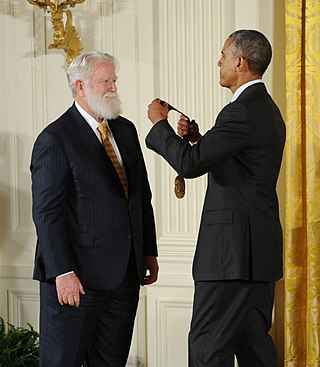
James Turrell is an American artist known for his work within the Light and Space movement. Much of Turrell's career has been devoted to a still-unfinished work, Roden Crater, a natural cinder cone crater located outside Flagstaff, Arizona, that he is turning into a massive naked-eye observatory; and for his series of skyspaces, enclosed spaces that frame the sky.

The Williams College Museum of Art (WCMA) is a college-affiliated art museum in Williamstown, Massachusetts. It is located on the Williams College campus, close to the Massachusetts Museum of Contemporary Art and the Clark Art Institute. Its growing collection encompasses more than 14,000 works, with particular strengths in contemporary art, photography, prints, and Indian painting. The museum is free and open to the public.
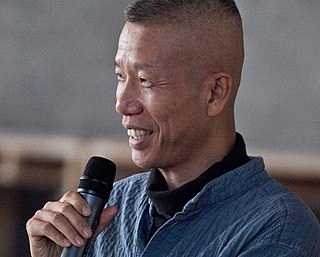
Cai Guo-Qiang is a Chinese artist.
Christoph Büchel is a Swiss artist known for provocative contemporary installations. He received international attention for constructing a mosque in a Venice church and suggesting that prototypes for Donald Trump's wall should be considered land art.

Clifford Ross is an American artist who has worked in multiple forms of media, including sculpture, painting, photography and video. His work is in the collections of the Museum of Modern Art, the J. Paul Getty Museum, the Metropolitan Museum of Art, the Whitney Museum of American Art, the Museum of Fine Arts, Houston, and the Philadelphia Museum of Art.
Gregory Euclide is an American contemporary artist and teacher who lives and works outside of Minneapolis, Minnesota.
Brion Nuda Rosch is an American visual artist. He is based in San Francisco, California.

Barbara Ernst Prey is an American artist who specializes in the art of watercolor. In 2008 Prey was appointed to the National Council on the Arts, the advisory body of the National Endowment for the Arts. In 2015, MASS MoCA commissioned Barbara Prey to create the world's largest known watercolor painting for its new Building 6, which opened in Spring 2017. She has worked in oil painting and illustration, the latter of which she contributed to The New Yorker for a decade. She currently works and lives in Long Island, New York, Maine and Williamstown, Massachusetts.
Nicholas Whitman is an American photographer. He is best known for his work chronicling the decay and transformations of buildings, as well as his nature studies. His most recent work’s basis is the physical world, but more as an "evocative interpretation rather than a literal one." "Subject intersects with intangibles like mood. Symbols speak across cultures and through time." These themes are manifest in the painting of Albert Pinkham Ryder, a recent focus of Whitman's. Whitman’s show “After Ryder” at the New Bedford Whaling Museum from 2018-2019 was an homage to the spirit of the painter, and in 2020 another show will exhibit Whitman's work alongside Ryder's.

Federico Díaz is an artist of Czech-Argentine descent who lives and works in Prague. He has exhibited at the Mori Art Museum Tokyo, CAFA Museum Beijing, Institute of Contemporary Arts London, Center for Art and Media Karlsruhe, Ars Electronica Linz, Massachusetts Museum of Contemporary Art, Art Basel in Miami Beach, the Florence Biennale, at the 54thVenice Biennale, the Brno House of Arts, Royal Institute of British Architects and had a project with the University of Cambridge. In 2010 he represented Czech art at the World Expo 2010 in Shanghai. In 2007 he received the Premio Internazionale Lorenzo il Magnifico for digital media at the Florence Biennale.
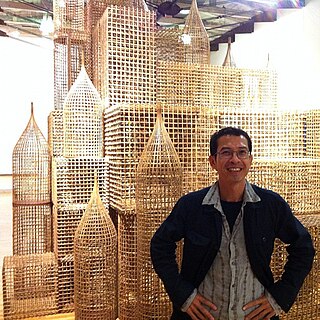
Sopheap Pich is a Cambodian American contemporary artist. His sculptures utilize traditional Cambodian materials, which reflect the history of the nation and the artist's relation to his identity.

Myfanwy MacLeod is a Canadian artist who lives, and works, in Vancouver, British Columbia. She has exhibited work in Canada, the United States of America, and Europe. MacLeod received an award from La Fondation André Piolat (1995), and a VIVA award from the Doris and Jack Shadbolt Foundation (1999). She has work in public, and private collections, including at the National Art Gallery of Canada, and the Vancouver Art Gallery.
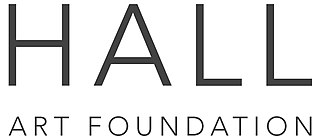
The Hall Art Foundation is an organization, founded in 2007 by Andrew Hall and Christine Hall, which oversees two contemporary art museums, one in Vermont and one in Germany, named Kunstmuseum Schloss Derneburg. There is also a permanent installation of Anselm Kiefer's work at MASS MoCA supported by the Hall Art Foundation. The museums in Vermont and Germany serve to exhibit some portion of Hall's 5,000-piece art collection. The Foundation and its efforts have been compared to Glenstone, another private museum.
Barbara Noah is an artist who currently works with digital prints and mixed media, with past work in public art, photography, painting, print, and sculpture.


